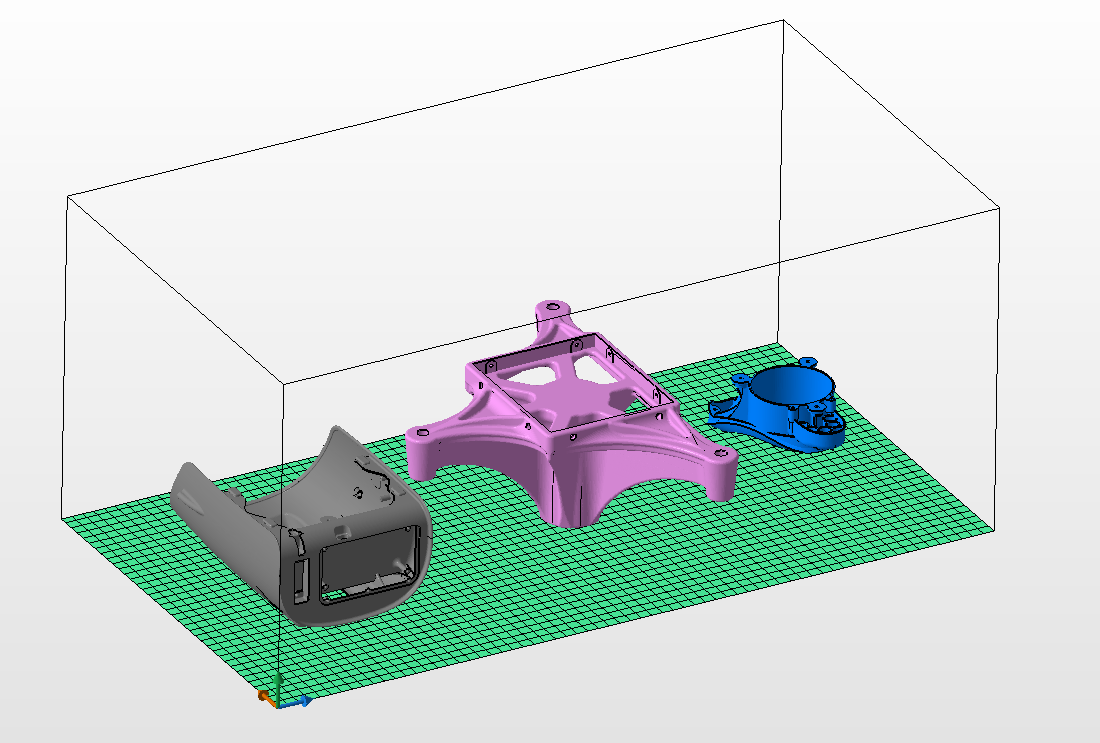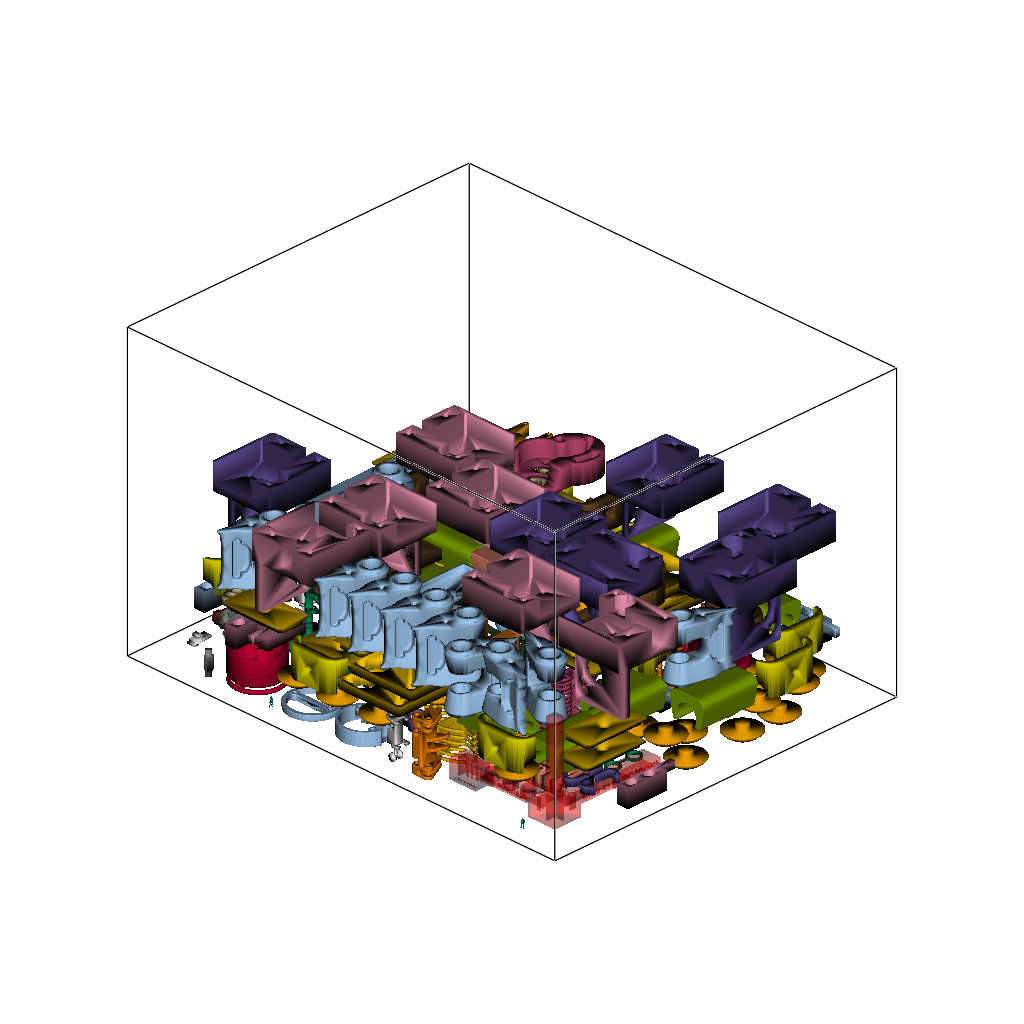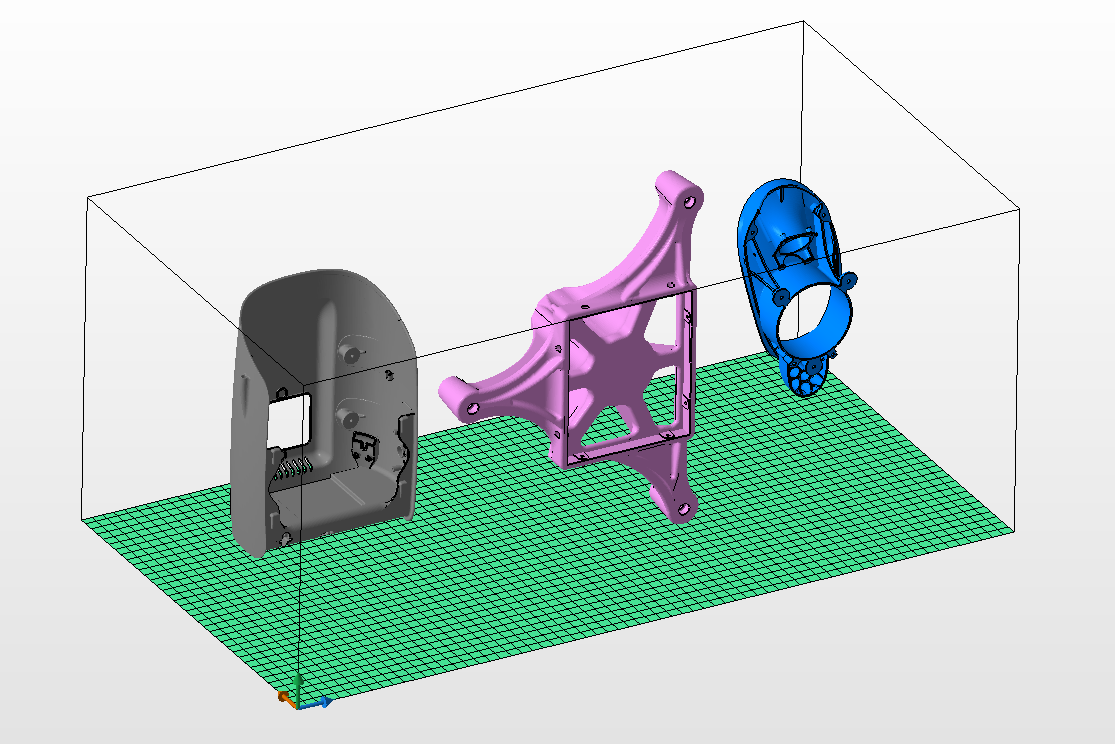“For every model, we are trying to keep the right balance between aesthetics and functionality.”
Angeliki Sioliou, User Application Design Specialist at Shapeways
Proper orientation is one of the most principal elements in 3D printing, with a lot of ground to cover overall for ensuring a quality product. Typically defined as a way to align or position an item, in terms of 3D printing, orientation at Shapeways is related to how industrial parts are placed together in the build tray. This also presents the opportunity to make sure a product reaches its true potential for success; in fact, nearly every ingredient for making a quality product comes together in the orientation.
Efficiency and Speed in Production
Each industrial 3D printing build is unique, driven by customization. While traditional manufacturing tends to revolve around mass production, the orientation process is still defined by different requirements too. Good examples include techniques like molding, where there must be considerations made for how a split line is going to occur on a part, or in CNC machining, figuring out how a part is going to be oriented in the jig to be cut. With 3D printing, the tradeoffs to be decided on begin during the modeling process; for instance, using a vertical alignment might allow for added space in a build, but cause longer production time, and vice versa with horizontal positioning.

Hundreds or even thousands of parts can be printed at once when using a technology like Selective Laser Sintering, meaning that this is a much different story from setting up one part and configuring it like an only child; in fact, packing a tray, also known as ‘nesting,’ is much like putting together a puzzle, even with the help of proprietary software.
Shapeways generally chooses the best orientation for parts that customers upload. Orientation must match the materials and technology at hand for the best results.

While Shapeways customers may not always know each other, often their customized 3D models are actually neighbors in the build tray, especially with a technique like SLS 3D printing, where so many parts can be manufactured at once. This means that many different parts for multiple customers may be oriented in the same build tray. For example, it would not be uncommon for one customer’s 3D heart models to be included in the same build with a different customer’s custom drone parts.
Other Shapeways customers, however, may demand such specific orientation that their 3D models are not nested in with others. For example, 67 Designs—a company who makes high-end accessories for off-roading vehicles—required very careful attention to the layout for the parts because of their logo, resulting in separate, dedicated build trays.
Considering Supports in 3D Printing
For SLS 3D printing with popular materials like Nylon 12 [Versatile Plastic], supports are not required, allowing for greater freedom in organizing the build tray; however, for processes that do require supports, packing and subsequent removal of support structures should play a role in the planning process ahead of time. Positioning of parts must revolve around the amount and type of supports being used, and the reasoning behind that is simple: good orientation means good support.
Dealing with supports can sometimes be a headache, but in some technologies—and for some particular 3D models—they may be impossible to avoid. The upside is that supports allow Shapeways customers to design some very cool parts, allowing for more intricate details as well as compensating for bridges, overhangs, and more. Robust supports ensure printability, and help avoid serious issues later, like total collapse or other types of failure.
Orienting with removal of supports in mind is key too. This is especially relevant for highly customized, complex parts requiring more comprehensive stability. The proper angles in orientation must be considered, preparing for easier extrication of supports—especially in the presence of overhangs and gaps in material.
Customized Orientation Settings During the Uploading Process
Shapeways often determines the most suitable orientation for parts, based on the best material for the application, and using as few support structures as possible. For some materials, however, like Nylon 12 [Versatile Plastic] and Fine Detail Plastic, it is possible for customers with more advanced knowledge to set the orientation with the ‘Set 3D Printing Orientation’ tool, using the following steps:
1. Visit https://www.shapeways.com/mymodels and click the three vertical dots to the right of the model.
2. Select ‘Open in 3D tools.’
3. On the following page, click on the ‘Set 3D Printed Orientation’ button.
4. A popup window will appear, displaying a navigational button in the bottom left corner. Use this to set the orientation, and then click ‘Save Orientation’ when done.

Note: This process will need to be performed for each material you wish to set the orientation for. These settings will not carry over to the other material options. Once you set orientation, Shapeways saves that selection for the same material each time. The goal is to ensure that each model is printed the same way every time, promoting accuracy and repeatability through orientation consistent with previous prints.
“Over time Shapeways has found the optimal way to orientate models,” explains Angeliki Sioliou, User Application Design Specialist at Shapeways. “Be aware that in printing miniatures, glasses, jewelry, or phone cases with the same material, orientation could be different and more complex.”
Although 3D printing has been popular with some customers for one or more decades, many are still used to designing for traditional manufacturing, and all the settings, materials, and technologies that go along with such methods.
“To set the orientation correctly, first you need to understand the technology,” said Sioliou. “Every technology and material is different, so if you are not confident about the technology, consult with the Shapeways team of experts.”
While very important, orientation is never a perfect science due to tradeoffs that are often involved. Many choices are left up to the designer, along with the opportunity to enjoy the beauty of infinite and mass customization. One of the greatest benefits in 3D printing is that nothing is set in stone—the design and modeling process allows for infinite changes and edits—and it is not the end of the world if a file or completed print needs further adjustments, especially in positioning a 3D design for the best outcome.
About Shapeways
Contact Shapeways now to enjoy the benefits of advanced technology and materials for manufacturing creations with accuracy, complex detail, and no minimum or limits in terms of mass customization or single part orders. Shapeways has worked with over 1 million customers in 160 countries to make over 20 million parts! Read about case studies, find out more about Shapeways solutions, and get instant quotes here.

